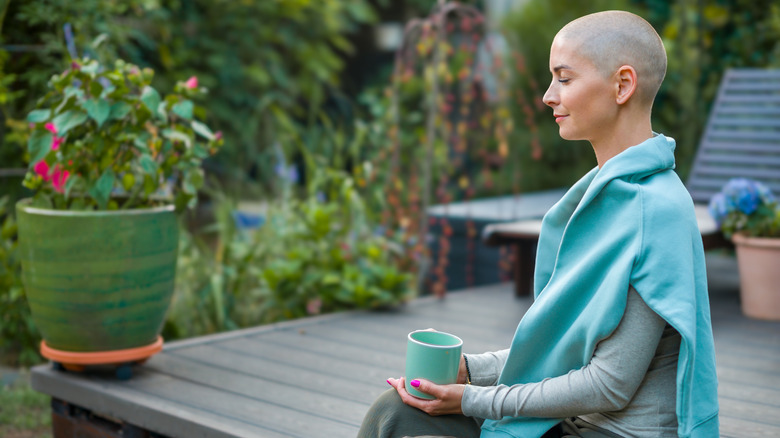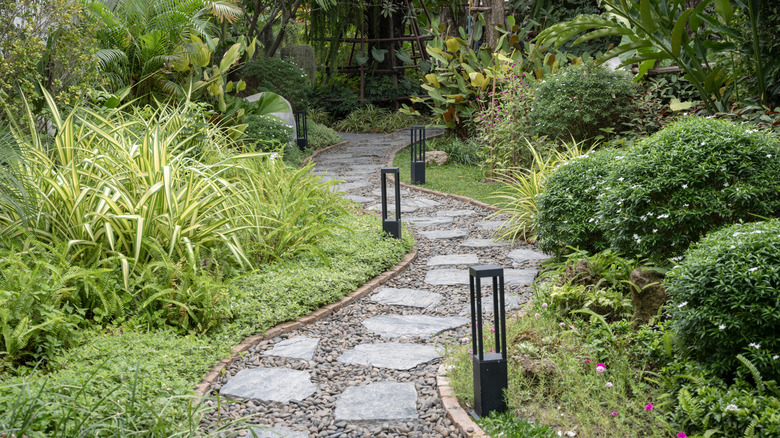How To Create A Beautiful Meditation Garden Of Your Own
Gardens — and nature, in general — have long held the power to get us out of our heads and the frenetic pace of life. In fact, spending time outdoors can offer physical, mental, and emotional healing. Nature relaxes our minds and bodies, boosts creativity, and soothes stress and anxiety. The slower pace of nature also helps to counter the overstimulation of urban spaces, whether the city's crowded sidewalks or the overwhelming rhythm of our daily lives.
To create an intentional space that offers stillness and contemplation, consider turning your yard — or just a portion of it — into a meditation garden. This type of garden is designed to connect people with nature and offer a place of solitude and peace. While meditation gardens have a similar purpose as Zen gardens, the latter is characterized by simplicity, minimal plants, and dry features like rocks and sand. Meditation gardens, on the other hand, are not as prescriptive and are guided more by personal preference. However, they typically incorporate water features, artwork (statues or hanging decorations), plants, and comfortable seating.
When considering what to include in a meditation garden, think about what brings you peace. What sounds, smells, and sights make you feel calm? Compile elements that come to mind, and then begin paring down your list of what to include. The key to a relaxing space is to keep it minimalist and low-maintenance. You don't want the meditation garden to feel too full, chaotic, or in need of constant upkeep.
Choosing calming elements for your meditation garden
The priority for your garden should be a seating area that is private, inviting, and weatherproof. If space allows, build a pathway to your meditation space, offering a tangible and symbolic transition from a noisy space to one of quiet solitude. Incorporate the sound of running water by making a mini waterfall or hang up a wind chime to add white noise and block out other distractions. Consider fitting in a focal point, such as a large plant or a statue, and create patterns with smaller plants or rocks to direct attention to it.
Your plant selection will depend on the type of light your space receives. You can also narrow down options by color, bloom time, texture, or fragrance. Ornamental grasses, often used in Zen gardens, are popular because of their simplicity and movement. A shade-loving, mounding grass with a range of variegation and color is Hakone or Japanese forest grass (Hakonechloa macra), suitable for USDA Hardiness Zones 5 to 9. A taller option, also grown in zones 5 to 9, is the pink muhly grass (Muhlenbergia capillaris), beloved for its wispy pink cotton candy-like plumes that arrive in the fall.
For plants, choose a compact English lavender (Lavandula angustifolia), ideal for zones 5 through 8, to add a calming fragrance to your garden. Grow a dwarf cedar tree in a pot, like the low-growing 'Feelin' Blue' deodar cedar (Cedrus deodara 'Feelin' Blue'), for a focal point with year-round color and texture. This particular cedar is hardy to zone 6 and can be staked in a pot, with a draping spread of up to 6 feet.

